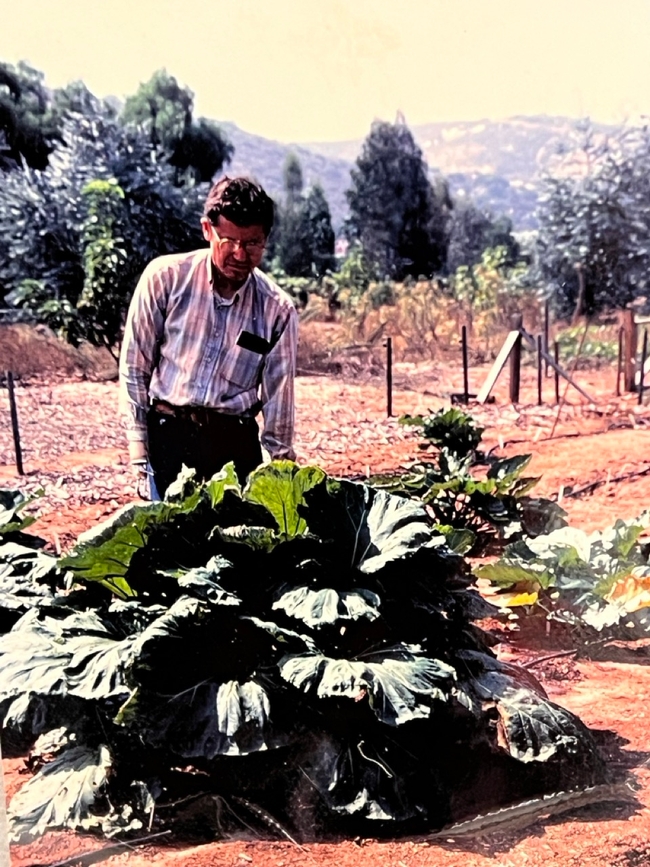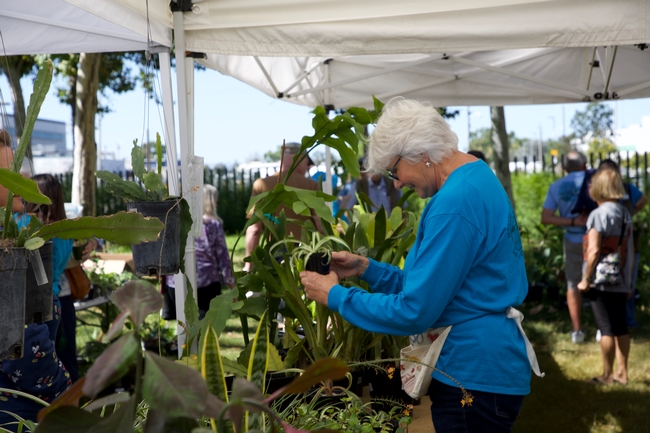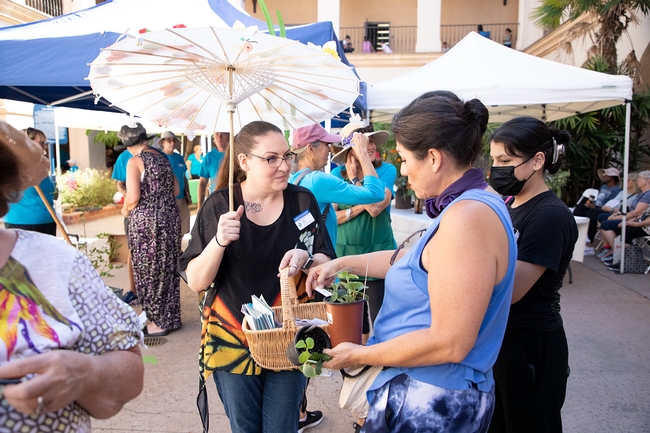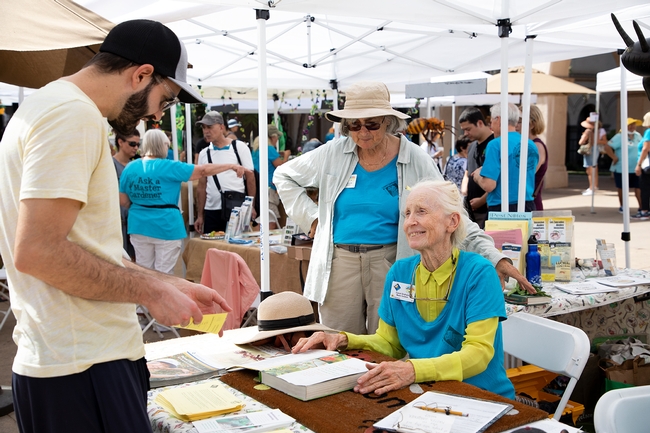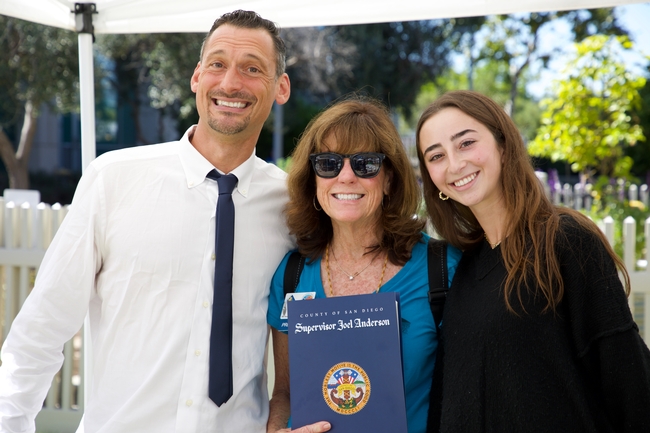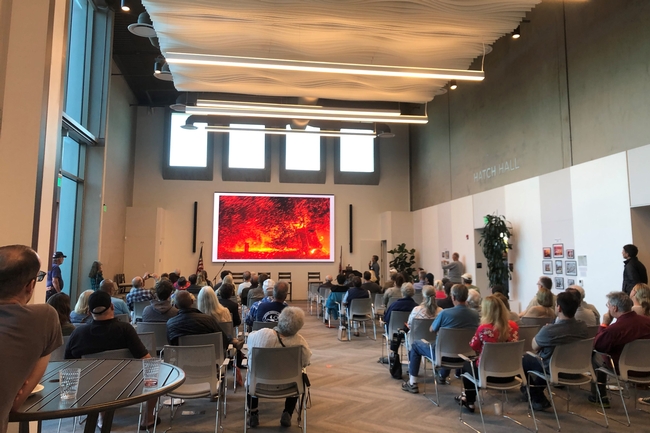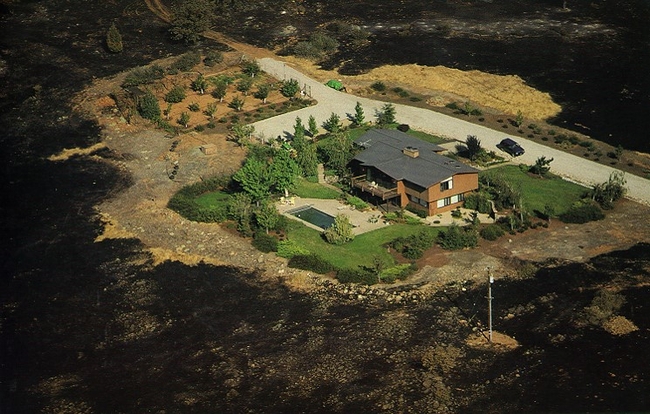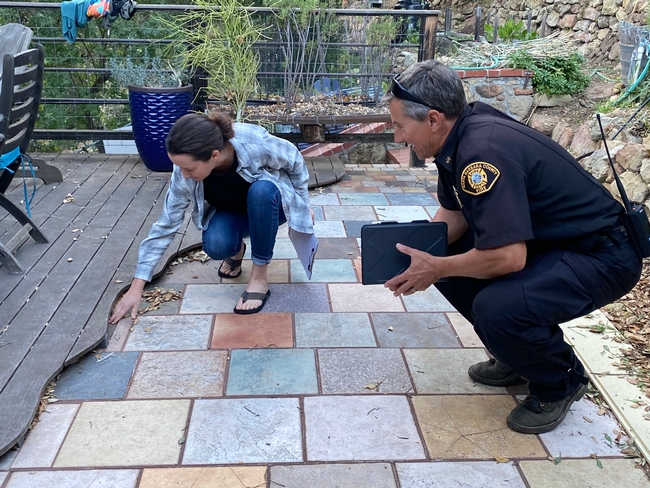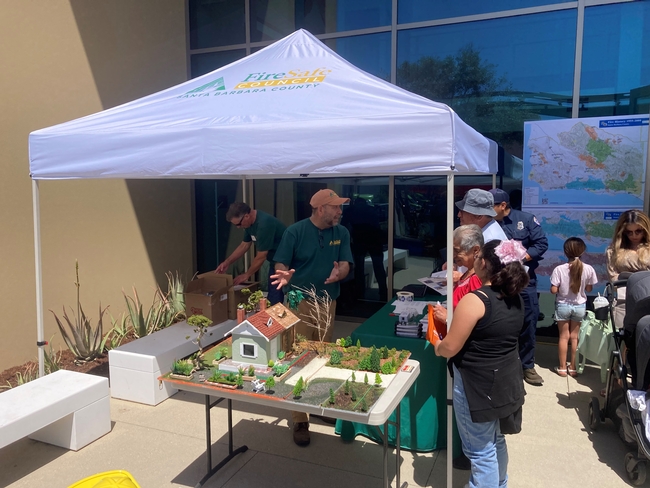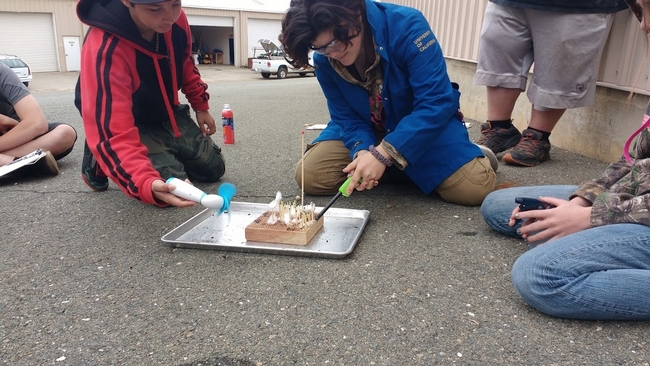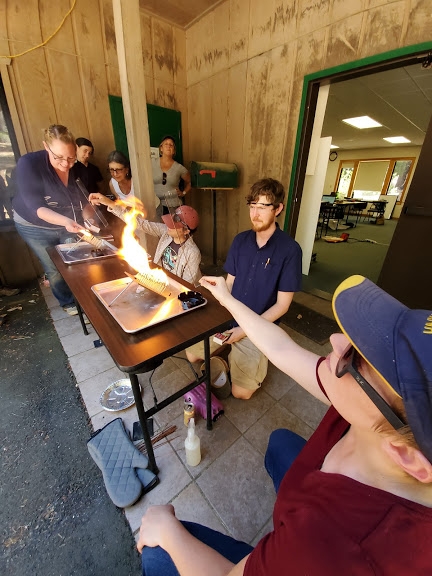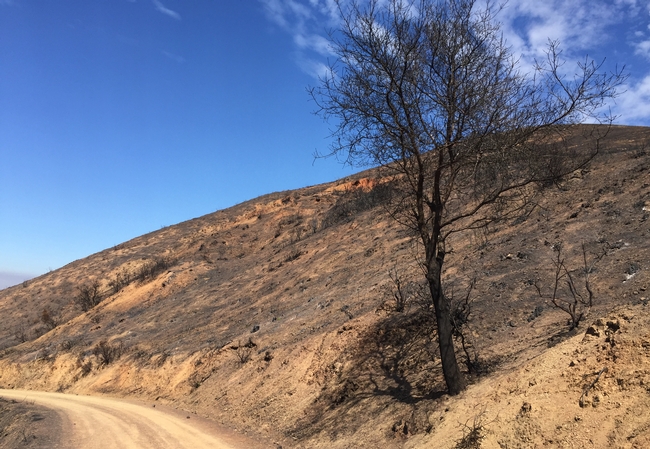Posts Tagged: community
UC Master Gardeners of San Diego celebrates 40 years of service to community
For 40 years, the University of California Master Gardener Program of San Diego County has upheld its mission of providing research-based information about home horticulture and pest management to the public, while earning and sustaining the community's trust in doing so.
“People trust UC Master Gardeners to provide accurate advice on gardening because they are trained by UC ANR [UC Agriculture and Natural Resources],” said Vincent Lazaneo, emeritus urban horticulture advisor and the first UC Master Gardener program coordinator for San Diego County.
The UC Master Gardener program, a public service and outreach program under UC ANR, is administered by local UC Cooperative Extension offices and outreach is provided by trained volunteers. In 1983, the UC Master Gardener program of San Diego County started with about 30 volunteers. Today, more than 350 volunteers serve the program, which is now managed by program coordinator Leah Taylor.
In San Diego, UC Master Gardeners have had a significant presence in schools, where they encourage an appreciation for plants and our planet; at the county fair where they field hundreds of questions related to plant care; and in community spaces such as Balboa Park and the Carlsbad Flower Fields where they staff demonstration gardens.
“Having the UC behind us is huge,” said Anne Perreira, UC Master Gardener and current president of the Master Gardener Association of San Diego County. “It opens doors for us and gives us credibility.”
'Dual citizenship' status expands capacity for support
When Lazaneo started the UC Master Gardener program in 1983, he felt the need to establish a formal association or 501(c)(3) nonprofit organization that would support the program.
Unsure of what the future held, Lazaneo believed that nonprofit status would increase the UC Master Gardeners' flexibility regarding project development, community engagement and financial planning. After 10 years, the UC Master Gardeners of San Diego County were approved as a registered nonprofit organization and became simultaneously known as the Master Gardener Association of San Diego County.
“It can be confusing for people when they hear that we're a UC program and an association,” explained Taylor. “It's like ‘dual citizenship' in a way, and I think the most important thing to know is that our status as a nonprofit and affiliation to UC work in conjunction to not only support the UC Master Gardeners and what they do in San Diego, but their ability to support UC Master Gardener programs in other counties.”
Emphasizing the research-based approach
Taylor, who has been the program coordinator since 2021, said that the UC Master Gardener program is instrumental in extending the work of UCCE advisors. “If you're working on research and you need to get that information out into the public, we've got 350 UC Master Gardeners who are trained and available to communicate on your behalf,” Taylor said.
“For me it's like a multiplier effect: how many San Diegans can I reach by teaching a seminar on small-scale hydroponics? Maybe 20 or 30,” said Gerry Spinelli, UC Cooperative Extension production horticulture advisor for San Diego County. “But how many can I reach by training 20 or 30 UC Master Gardener volunteers on the same topic? Maybe 200 or 300.”
Spinelli, who also advises the UC Master Gardeners for San Diego County, said that the group has been instrumental in data collection and disseminating information to the public, particularly in urban underserved areas.
Lazaneo recalls the UC Master Gardeners establishing a partnership in 1983 with Cuyamaca College in El Cajon. The college's Horticulture Department allowed the UC Master Gardeners to develop a research garden on campus. After setting a perimeter, building a fence, installing irrigation lines and rototilling the soil, the UC Master Gardeners planted different tomato varieties that were used in a statewide study assessing plant performance for home gardens.
In addition to educating and equipping the public, the UC Master Gardeners of San Diego County have contributed to research efforts on specific crops, including the development of a new artichoke variety, Imperial Star, with guidance from Wayne Schrader, former UCCE vegetable crops advisor for San Diego County.
The research garden, which was used for more than a decade, also aided in research efforts evaluating asparagus varieties, horned cucumbers called “Kiwano,” a fruit similar to melon called pepino dulce, sweet peas, rhubarb and many others. Similarly, the research garden has contributed to trials for soil solarization and chemical treatment to control root knot nematodes and expanded understanding of powdery mildew's impact on summer squash.
Evolving with the times
Out of 170 applications, Lazaneo selected about 30 individuals to be a part of the first class of UC Master Gardeners for San Diego County. Carol Graham, who is still active today, was in the original cohort that formed in 1983.
Graham said that “times have certainly changed,” and one of the changes she's noticed since joining UC Master Gardeners is the proliferation of insects. “I don't remember pests being a severe issue when I first started. Now, you've got all kinds of bugs that have moved into the county, causing people to overuse and misuse pesticides,” said Graham.
Graham's 40 years as a UC Master Gardener have given her an opportunity to teach people how to overcome their phobias of bugs and how to use pesticides safely and appropriately. Furthermore, her role as a UC Master Gardener has allowed her to teach others how to grow their own food in hopes of enhancing food security in the county, something she cares deeply about.
The UC Master Gardeners also have changed the way they communicate over the years. DeLayne Harmon, vice president of member services, is well-versed in the program's history.
“Before we began tracking our volunteer hours online, do you know what the UC Master Gardeners did back in the day?” asked Harmon, who joined UC Master Gardeners in 2020. “They wrote everything down by hand, with pen and paper!”
“It's easy to have the mentality that's like, ‘This is how we've always done things,'” said Harmon. “But the UC Master Gardeners know that there is always room for improvement, and we welcome opportunities to be better.”
Giving back and putting people first
The UC Master Gardeners of San Diego County are eager to improve access to fresh food in schools. Recently, the UC Master Gardeners were given a $5,000 grant by the Sage Garden Project, which will be used to partner with schools in under-resourced communities.
“We want to be in places where the people don't know about UC Master Gardeners,” said Perreira, the association president. “We realized that there are a lot of students who don't know what fresh food looks like and we want to change that.”
In 2022, the UC Master Gardeners transformed a landfill into a demonstration garden, now called the Paradise Hills Native Garden, which they also maintain. “It's beautiful and there are walking trails for the community to enjoy,” Taylor said. “The native garden is in a neighborhood that doesn't have a lot of green space, and to have something so beautiful, that encourages community gatherings, it's a good thing.”
Looking to the future of the UC Master Gardener program in San Diego, Taylor says that she wants to continue making an impact in the community and having the UC Master Gardeners be that driving force.
Grateful for Taylor's leadership, Spinelli said that he is excited about the program's impact on food education, particularly in food deserts.
“We are blessed with a climate that allows year-round food production, and with the science-based knowledge offered by the UC system, our UC Master Gardeners can provide San Diego County residents with the tools to grow local, healthy, nutritious, safe and environmentally friendly food for their families,” Spinelli said.
When reflecting on how far the UC Master Gardeners of San Diego County have come, Perreira – who has been a UC Master Gardener since 2016 – emphasized how important it is to continue their legacy of doing good in and with the community. “We've got a diversity of skills within our group and I'm ready for us to expand our capacity to create change. What we do and what we say have to mean something!” she said.
Congrats to Outstanding Advisor and Mentor Louie Yang!
Congratulations to community ecologist Louie Yang, a UC Davis professor in the Department of Entomology and Nematology and chair of the...
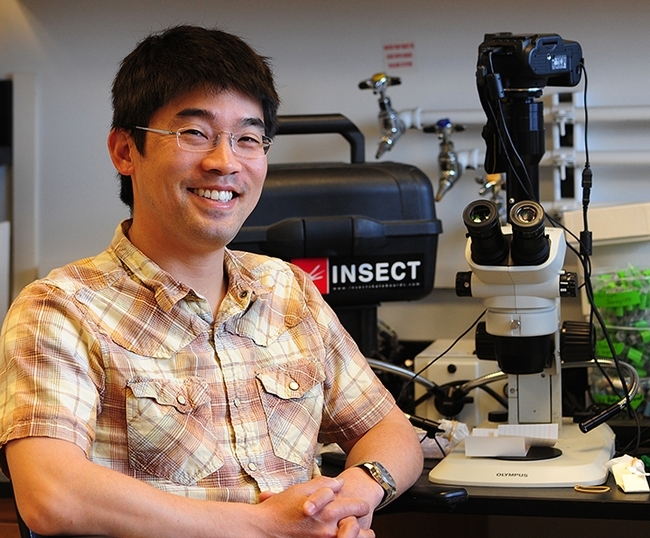
Community ecologist Louie Yang, professor, UC Davis Department of Entomology and Nematology, has received a campuswide UC Davis Graduate Program Advising and Mentoring Award. (Photo by Kathy Keatley Garvey)
Study: Regional approach to wildfire more comprehensive, equitable
Pilot program in Santa Barbara County shows promise for bolstering resilience
After a rash of wildfires across Southern California in 2003, many counties, cities and neighborhoods adopted Community Wildfire Protection Plans to improve their preparedness and fire response. But Rob Hazard, fire marshal for Santa Barbara County, has noticed that CWPPs and resources are unevenly distributed across areas at high risk of wildfire.
“Communities that are more affluent, more white, they are the ones that end up getting the grants, they're the ones that end up getting the projects to mitigate risks,” Hazard said, “whereas more disadvantaged communities…often don't have the organization to make that happen, or maybe it's not the most pressing issue of the moment.”
Mapping those underserved communities – and ensuring they have a more equitable share of attention – are some of the goals of a new, more comprehensive approach to wildfire, currently being piloted in Santa Barbara County. This “Regional Wildfire Mitigation Program” aims to fill in many of the gaps left by CWPPs, which tend to have a more narrow focus on fuel reductions for a specific locality.
“They certainly have their role and benefits, but CWPPs are pretty limited in scope,” said Max Moritz, University of California Cooperative Extension's statewide wildfire specialist. “They're really focused on modeling and prioritizing fuel breaks, and they leave all of these other aspects of our fire problem – our vulnerabilities, our potential losses – unaddressed.”
Moritz is the lead author of a recently published research article that describes the Regional Wildfire Mitigation Program's three key areas (or “domains”) for wildfire mitigation work: the built environment (pinpointing and addressing needs in buildings/infrastructure), landscape (creating buffers through land use policies and management choices), and community (educating the public on home hardening and other issues).
“It's this holistic approach that combines all of these elements, and each one of those elements speak to each other – they can't be independent,” said Hazard, a study co-author.
Seeking a better way
After the Thomas Fire devastated the region in 2017-18 and triggered deadly mudslides in Montecito, Moritz – an adjunct professor at UC Santa Barbara's Bren School of Environmental Science & Management – sought more encompassing risk mapping and mitigation solutions that could complement CWPP efforts.
He got together with Hazard, who began his career as a “hotshot crew” firefighter with the U.S. Forest Service and has been with Santa Barbara County Fire Department for nearly 25 years.
“Both of us believe: Yes, it is home hardening – but it's also defensible space, but it's also some fuel treatments, but it's also some prescribed fire, but it's also some agricultural belt (to create a buffer),” said Hazard. “We looked at it objectively, and in every community in Santa Barbara County there's something that either works – or doesn't.”
By the end of the pilot program along the south coast of Santa Barbara County, the team hopes to have refined a “decision support system” that other communities across the state – and perhaps around the globe – could use. The framework would incorporate their localized risk assessment data and conditions to help generate lists of prioritized projects across the three “domains” of wildfire mitigation.
The ability to adapt to new data and continual changes in ecosystems, communities and climate is another advantage of the RWMP. Unlike a “plan” that tends to be a one-off with a defined start and end date, this wildfire mitigation “program” is designed to pivot and evolve as conditions change. The goal is to motivate and guide implementation of risk mitigation activities in each domain.
“The program is a living program, so it's not going to be some PDF that sits on a server somewhere,” Hazard said.
One of the early lessons from the RWMP pilot has been that – aside from funding – a crucial factor in maintaining the momentum of a wildfire mitigation program is the presence of a dedicated group of community members.
“In each community, we'll need a group that is ready to take this on and spearhead it and run with it,” Moritz said. “In many communities, that will probably be the Fire Safe Council.”
Building ‘Firewise' communities
Local Fire Safe Councils are “grassroots, community-led organizations that mobilize residents to protect their homes, communities and environments from catastrophic wildfire,” according to the California Fire Safe Council.
And while Moritz, Hazard and other experts serve on the volunteer Board of Directors for Santa Barbara County Fire Safe Council, they soon realized that they needed to hire staff to perform the “community domain” work of educating and reaching out to residents.
A $5 million grant from the National Fish and Wildlife Foundation for the RWMP project helped build the capacity of the council, which hired its first staff member, Anne-Marie Parkinson, last fall.
“A lot of people underestimate how important it is to have community activists or leaders who take on the role and responsibility of organizing people, being the point of contact, rallying people to do activities or work days,” said Parkinson, a graduate of UCSB's Bren School and a co-author of the RWMP study.
Parkinson has been working to get communities recognized by Firewise USA, a program of the National Fire Protection Association to organize residents in bolstering wildfire preparedness and reducing risk.
Although she has been encouraged by the awareness and activism among the community members she has met, Parkinson also hears from residents about the need for more resilient power and communications networks – concerns that could be better addressed by consolidating those requests with a regional approach.
“As we work with more and more communities, you can start to map which communities want better telecommunications, and which communities would benefit from a fuel break around them, and then we could write a grant that benefits five communities, instead of one small grant for one community,” Parkinson said.
Moving forward
There are many communities in fire-prone environments that are in need of help, and climate change makes their situation increasingly urgent, Moritz said, and a new and comprehensive framework – the RWMP – now exists for assessing and mitigating multiple risks.
“Every community has its own unique fire hazards and its own unique spatial layout of neighborhoods and vulnerabilities inherent to those neighborhoods,” he said. “But despite the uniqueness of each community and each region, I'm hoping this will provide a somewhat systematic way to approach making progress and mitigating a whole suite of risks.”
Other authors of the article are Kelly Johnston, Molly Mowery and Katie Oran of the Community Wildfire Planning Center; Marc Mayes of Spatial Informatics Group-Natural Assets Lab and UC Santa Barbara Earth Research Institute; Graham Wesolowski of Spatial Informatics Group-Natural Assets Lab; and David Schmidt of Spatial Informatics Group. The article is published in Frontiers in Forests and Global Change at https://www.frontiersin.org/articles/10.3389/ffgc.2022.848254/full.
People interested in learning more about the RWMP approach are encouraged to contact Graham Wesolowski at gwesolowski@sig-nal.org or Max Moritz at mmoritz@bren.ucsb.edu.
Allie Igwe: The Road to Success
The road to success is paved with soil microbial communities. And education, curiosity, determination, and collaboration. UC Davis doctoral student...
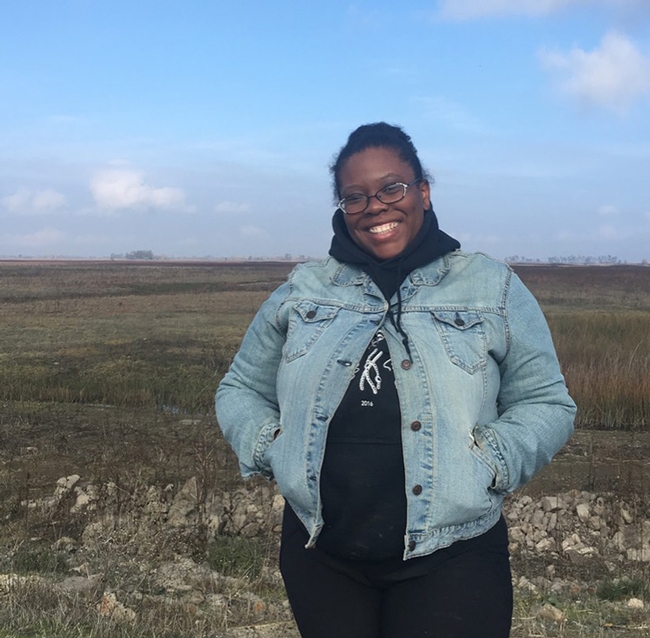
UC Davis doctoral student Alexandria “Allie” Igwe has received a $138,000 National Science Foundation Postdoctoral Fellowship to work on soil microbial communities and develop novel online tools to increase interest in ecology.
To prepare Californians for wildfire in oak woodlands, UC ANR offers teachers training
California's most destructive wildfire year on record was 2018, with devastating fires occurring in Northern California oak woodlands. From 2015 to 2017, six of California's 20 most deadly and destructive fires in history occurred in these areas. The communities living in oak woodlands, which had been mostly spared from previous wildfires, were largely unprepared.
To prepare Californians to live with wildfire, Kate Wilkin, former UC Cooperative Extension forestry/fire science and natural resources advisor, and UC Sierra Foothill Research and Extension Center and Hopland Research and Extension Center community educators Alexandra Stefancich and Hannah Bird received a $100,000 Environmental Protection Agency Environmental Education grant.
In addition to delivering community workshops, the educators will offer online training for teachers this summer. The curriculum will be introduced by webinar on Tuesday, July 14, from 11 a.m. to 11:30 a.m. (PDT). Register online for this free webinar at https://bit.ly/firecurriculum.
“The goal of this project is to educate youth and adults about their natural ecosystems and how to reduce the risk of catastrophic wildfire,” Stefancich said.
Even before the current COVID-19 pandemic constrained activities, challenges arose: the federal government shutdown delayed the grant; a wildfire burned approximately two-thirds of the Hopland REC; Wilkin moved on from UCCE and Rebecca Ozeran, UCCE livestock and natural resources advisor, took over leading the wildfire education project.
Training kids, adults and communities
The team is educating children, adults and communities. Their three-pronged approach includes youth education for 500 middle school students and training for teachers; adult education through advanced training for California Naturalists; and community education by partnering with Fire Safe Councils in Butte, Mendocino and Yuba counties.
“One of the most exciting aspects of this grant has been the youth fire education component,” Bird said. “The grant has funded an adaptation of theUS Forest Service's FireWorks Curriculum – first modeled for Rocky Mountains forests – to the California oak woodland ecosystem. This hands-on, place-based science curriculum aims to provide students an in-depth understanding of fire science. In working on this curriculum, the team wants to highlight the importance of not only oak woodland fire science, but the cultural history associated with fire on these landscapes.”
The grant allowed the team to work with local representatives from the Hopland Band of Pomo Indians, Kashia Band of Pomo Indians, United Auburn Indian Community and the Nevada City Rancheria to develop lessons shaped by the cultural value of fire as a tool and the long relationship between people and fire in California.
While developing the lessons, the team realized the importance of trauma-informed educational practices.
“Just five years ago, we often talked about wildfire theoretically, but now every student I speak with has their own experience to share,” Bird said. “It is important to give time in the lessons for the trauma experienced by our youth, and to educate them and encourage a sense of agency. These lessons focus on the positive! We don't spend time on things that we cannot change. We learn crucial concepts of fire science and build on them to make our schools, families and communities more fire prepared.”
Feelings about fire
The team piloted the new curriculum with more than 150 middle school students in Redwood Valley and Ukiah, just before schools closed due to the COVID-19 pandemic.
“Trialing the curriculum with students was really valuable,” Bird said. “These students have seen their communities affected by wildfire and it brings up many emotions for them.”
Students were asked to share their thoughts around fire at the beginning of the lessons and again at the end of the lesson series. Feelings of fear were replaced with feeling prepared and confident.
Before the lessons, students' comments about fire included, “Scary because I live in the mountains and my house is there, it could burn down.”
After the lessons, their comments included, “I felt positive about this, I feel that I know what to do, I think everyone should know how to prepare for fire.”
Pomolita Middle School students made an action plan for their school to help improve school fire preparedness. Students had hoped to present their plans to school administrators, but school closures due to the coronavirus crisis have delayed the presentation.
“Most of what we found at Pomolita school was really positive – the students do have a few suggestions that they hoped to share with the school administration,” Bird said. “Students also made an emergency contact plan and planned what they would like to have in a go bag for themselves and for their pets.”
Community educator Stefancich added, “This curriculum, aimed at middle school students, is ideal for any educator hoping to provide their students with more insight about the role fire plays in the ecosystem and how they can prepare for its eventuality. Each lesson is set up for the lay educator to be able to teach, so even without advanced fire knowledge it will be easy to use.”
The team continues to adapt the FireWorks curriculum for oak woodlands and expects it to be available at the FireWorks site https://www.frames.gov/fireworks/curriculum/overview by the fall.


